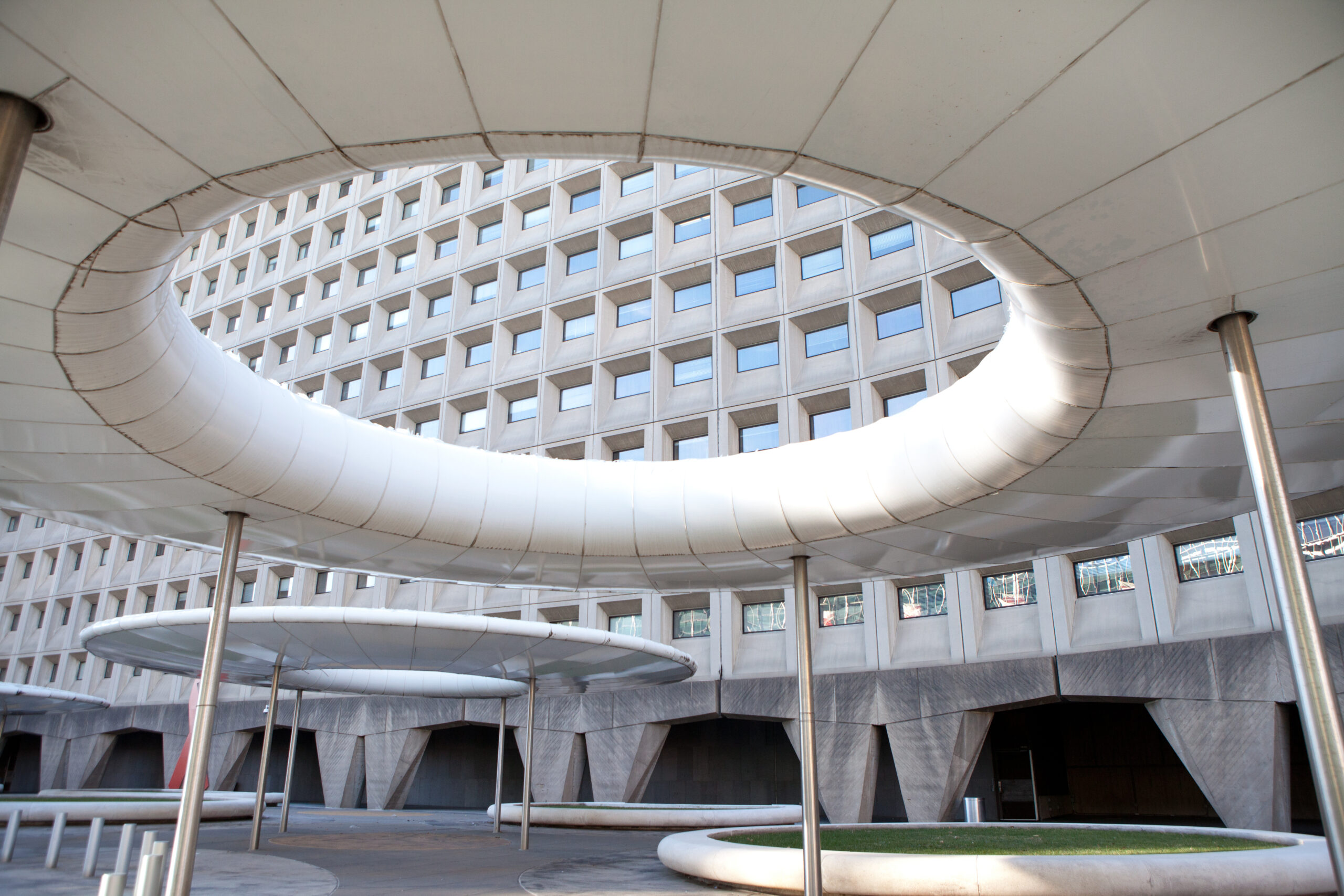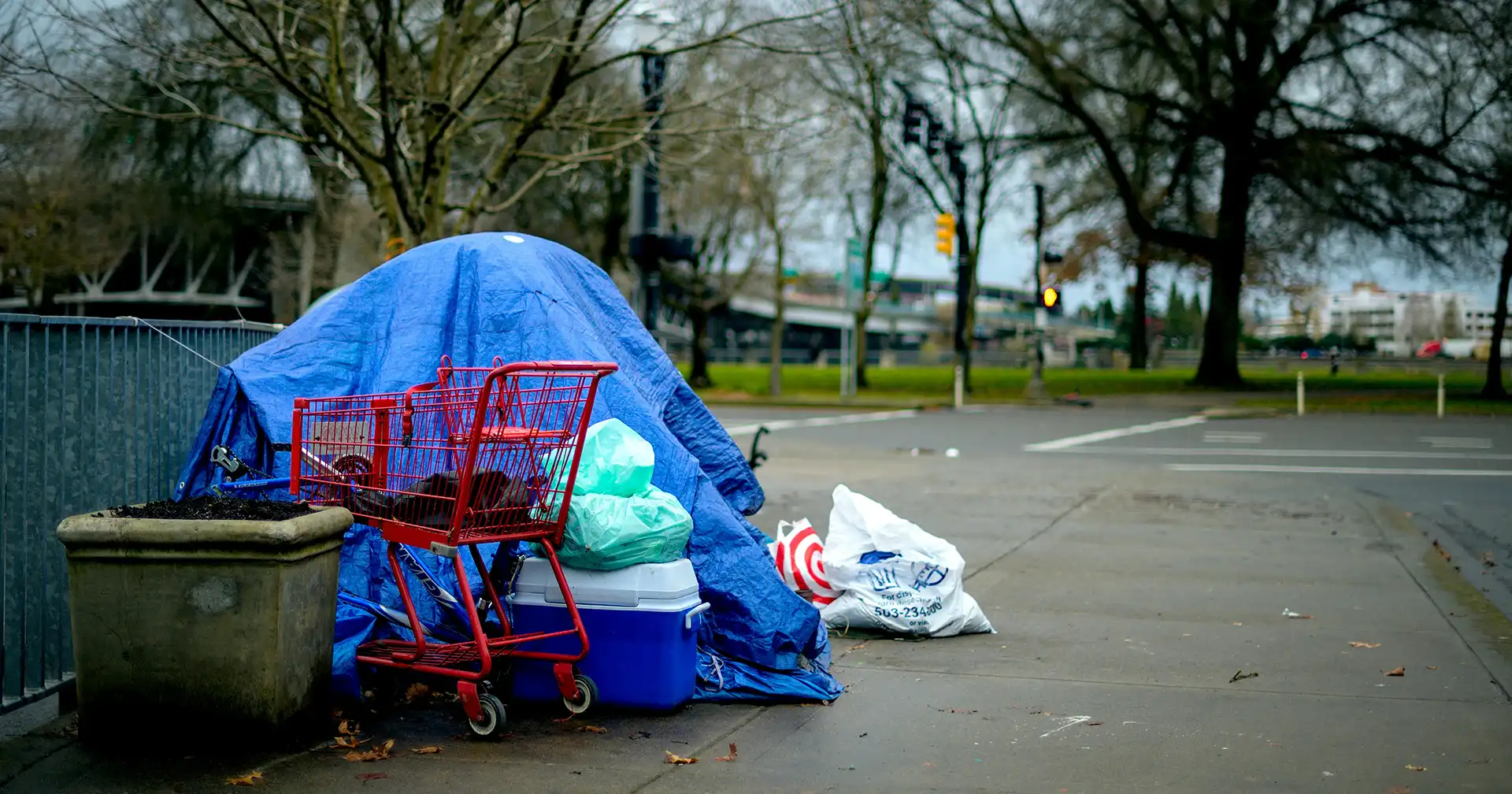Contact: Libby Miller | lmiller@naeh.org | 202-942-8252
Leaders Call on Newsom to Pull Back the Executive Order and Collaborate with Local Governments to Focus on Evidence-based Encampment Strategies
Washington, D.C., July 26, 2024 — The National Alliance to End Homelessness expressed its dismay following Gov. Gavin Newsom’s Executive Order N-1-24, which directs California state agencies and departments to begin clearing encampments on state property utilizing a deeply flawed model. Now, more than ever, elected officials, homeless system leaders, and frontline homeless services providers must work in strategic collaboration with each other, and in partnership with people experiencing homelessness in their communities, to implement person-centered strategies and solutions to ending homelessness. This order rejects such collaboration and dismisses the input of those with the deepest understanding of this issue.
The order comes at a time when harmful and coercive policies are rising across the country, despite evidence that these approaches do not work to end people’s homelessness.
“The evidence is actually very clear: forced encampment evictions are ineffective, expensive, and non-strategic,” said Ann Oliva, CEO of the National Alliance to End Homelessness. “The blanket order to clear encampments without addressing the immediate and long-term needs of their residents will displace thousands and increase their risk of harm. It will also hinder the progress of California’s deeply under-resourced providers who are working day and night to rehouse the state’s unsheltered population. That is not a solution to California’s homelessness crisis.”
Instead, this Executive Order uplifts the deeply flawed approach used by the California Department of Transportation (Caltrans). This model requires only 48 hours of notice to providers and encampment residents, and sometimes less. It also allows for encampment evictions to occur regardless of whether there is an adequate supply of available and accessible shelter and housing resources. The Alliance advised community leaders that the order only applies to state land and urged them not to utilize such an approach systemwide.
The Alliance expressed frustration that this approach sets communities up to fail. It forces a far too insufficient timeline for encampment closures that will overburden local providers who are already chronically overstretched. Furthermore, it will disrupt outreach and services to people currently being served and divert resources from their active efforts to rehouse California’s unsheltered population. It will also push unsheltered people into localities that lack the infrastructure to address this issue, erode their trust in the state’s services, and overburden law enforcement with a directive that they lack the tools or training to properly address.
Moreover, this Executive Order will disproportionately affect Black, Brown, and Indigenous people, who are already overrepresented in California’s homeless population: a result of historically entrenched implicit bias in public assistance systems and other institutions. Despite making up only 7 percent of the state’s population, Black Californians constitute more than a quarter of the state’s homeless population. The extent to which law enforcement is used to execute this directive will only accelerate the devastating overrepresentation of Black Americans in the criminal legal system and make it far more difficult for those with justice system involvement to secure housing or employment.
Alliance leaders noted that California’s policy experts, local jurisdictions, and people with lived experience have been clear that the primary barrier to ending homelessness in the state has been the resistance to making sustained and permanent funding commitments for desperately needed housing and services.
“This Executive Order downplays the nature of the housing crisis in California and overlooks the fact that the state only has the capacity to shelter an estimated 39 percent of homeless individuals1,” said Oliva. “This short-sighted and reactive response will disconnect people from providers who are actively seeking to assist them; lead to loss of vital paperwork, identification and medicine that they need to survive; and cut them off from access to the services they need.”
The Alliance urges the Governor and his administration to pull back the Executive Order. Instead, the Governor and his administration must work in collaboration with local governments to focus on evidence-based, equitable, and cost-effective encampment strategies that result in people being housed, not displaced.
About the National Alliance to End Homelessness
The National Alliance to End Homelessness is a nonprofit, nonpartisan organization committed to preventing and ending homelessness in the United States. As a leading voice on the issue of homelessness, the Alliance analyzes policy and develops pragmatic, cost-effective solutions; works collaboratively with the public, private, and nonprofit sectors to build state and local capacity; and provides data and research to policymakers and elected officials in order to inform policy debates and educate the public and opinion leaders nationwide.
1 Calculation based on analysis of the U.S. Department of Housing and Urban Development’s 2023 Annual Homelessness Report to Congress.
Stay Updated: Solutions, Stories, and Ways to Make an Impact
Sign up to receive updates on the Alliance’s work, including the latest research, advocacy efforts, and real stories of progress — plus ways you can help drive lasting change.












